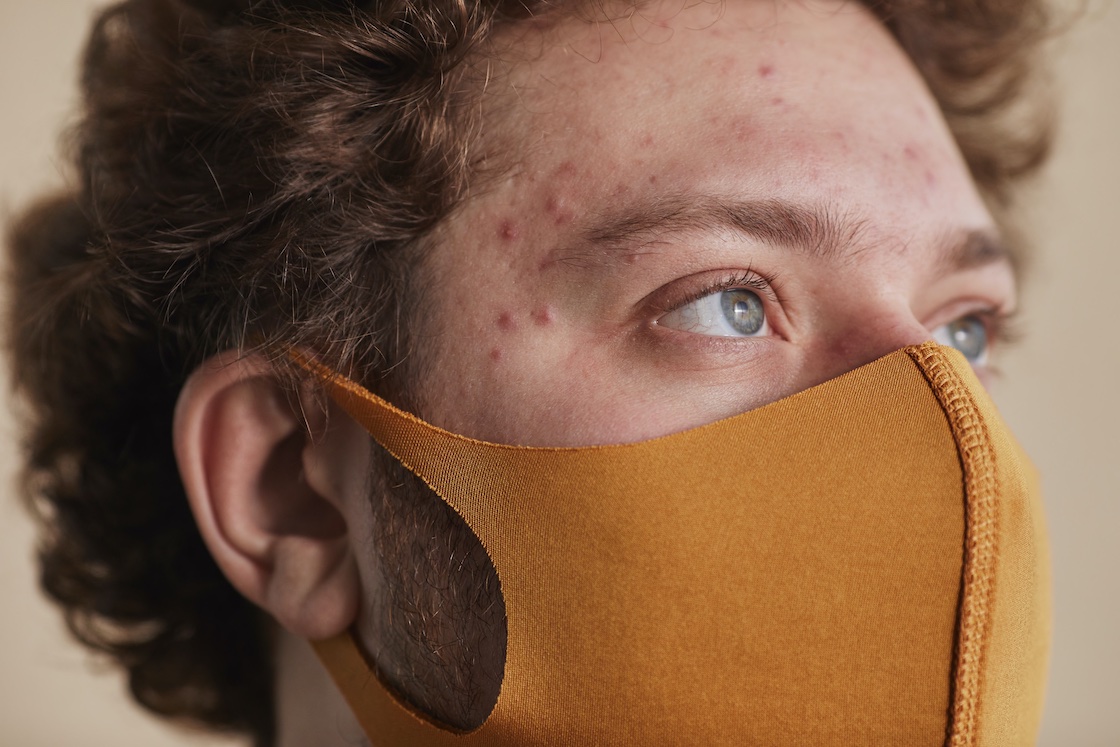Table of Contents
Pimples and acne form when the small glands beneath the skin surface become blocked. While acne usually develops on the forehead, it can actually form in any place of your body.
Poor hygiene, stress, and hormonal changes are some common causes of forehead acne and pimples. Although acne doesn’t pose any potential severe health risks, it undoubtedly appears unattractive.
This article discusses the most common causes of pimples and forehead acne, along with some simple treatment methods. So, let’s get started.
Common Causes of Forehead Acne and Pimples
Sebum, which is an oil, is responsible for lubricating and protecting your skin. This chemical is produced in sebaceous, which are tiny oil glands, and it reaches your skin by passing through your skin pores.
Sometimes your skin pores get clogged up with dead skin cells, excess oil, and dirk. Resultantly, bacteria start growing inside your skin and cause pimples in the form of swollen bumps. There are multiple reasons why the oil production in your skin increases and acne is formed.
Stress
According to an NCBI (National Center for Biotechnology Information) study, there is a strong connection between the formation of acne and stress.
Hormonal Changes
The formation of acne is particularly common in young people during their puberty period. In this period, oil production increases dramatically because of the surge in hormone levels that leads to pimples and acne.
Medication
Some medication types such as lithium, barbiturates, anticonvulsants, and steroids can lead to acne as a side effect.
Poor Hygiene
Not washing your face and hands regularly and eating a lot of junk food can also lead to acne and pimples.
Hair Products
Your har can also cause forehead acne formation. If you have oily hair and don’t wash it regularly, your skin pores can get clogged up due to oil deposits. The acne breakout can also occur because of many hair products such as waxes, gels, oils, and pomades.
These products usually come with ingredients such as coconut oil and cocoa butter, which can make your skin extra oily. The acne formed on the forehead due to hair products is called pomade acne.
Makeup or Clothing Irritation
Wearing different clothes such as a hat and using forehead makeup can also lead to acne. It usually happens if you have extremely sensitive skin.
How to Treat Pimples and Forehead Acne
You’ll want to start following good skincare habits to avoid pimples and forehead acne. For example, a gentle cleanser to wash your face at least twice a day will remove the dead cells and excess oil from your skin.
Not only will it keep your skin pores from clogging up, but it’ll also allow your skin to heal the already formed acne. You can also use specialized acne creams that come with salicylic acid or benzoyl peroxide.
Simple Home remedies
Using simple natural remedies is one of the best ways to get rid of pimple and forehead acne, including:
- Aloe Vera: Use natural and pure aloe vera gel or oil directly to your forehead where pimples and acne are formed.
- Zinc: You can eat food items rich in zinc, and you can also buy zinc supplements to treat pimples and forehead acne.
- Lime or Lemon Juice: Use a small cotton pad to apply lime or lemon juice directly to your forehead.
- Apple Cider Vinegar: Apple cider vinegar can also treat pimples and forehead acne. All you need to do is mix three-quarters of water and one-quarter of diluted apple cider vinegar and apply it directly to your forehead using a small cotton pad.
- Tea Tree Oil: Create a mixture of half cup water and a few drops of tea tree oil and apply it gently to your forehead.
Medical Treatments
You can also use prescription medicine to treat pimple and forehead acne if they’re severe. Visit your dermatologist, and the doctor may provide you with the following treatments:
- Anti-androgen agent
- Birth control pills for women
- Retinoids
- Benzoyl peroxide formulation
- Antibiotics
How to Prevent Pimples and Forehead Acne
- Use a cleanser to wash your hands and face at least twice a day.
- Wash your hair at least once every two days, especially if you have oily hair.
- Avoid using headbands and hats if you have sensitive skin.
- Don’t touch your skin with your hands to prevent bacteria from getting into your pores.
- Use non-comedogenic cleansers and makeup items.


